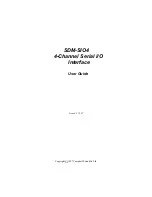
16
8.
PERFORMANCE DATA
8.1
Capacity
The derope
®
emergency escape/controlled
descent device is designed to be used by one
or two (1 or 2) persons. The combination of the
user(s) weight, clothing and tools must not be
less than 66 lbs. (30 kg) and must not exceed
500 lbs. (225 kg).
8.2
Requirements
The derope
®
descent device meets ANSI
Z359.4-07 and CSA Z259.2.3, type 1E.
8.3
Anchorage strength requirements
3,100 lbs. (13.8 kN).
8.4
Maximum allowed single descent height
Up to 1,300 ft. (400 m) for one person and up to
650 ft. (200 m) for two persons.
8.5
Maximum allowed consecutive
descent height
See
Table 2
, page 8.
8.6
Nominal descent speed
235 ft./min. (72 m/min.) for one person and
295 ft./min. (90 m/min.) for two persons.
8.7
Hoisting/lowering height with hand wheel
The maximum hoisting/lowering distance with
hand wheel winch is 165 ft. (50 m).
9. INSPECTION
9.1
Inspection schedule
A thorough inspection of the working components
is required by Tractel
®
or an authorized service
center upon meeting one of the following critiria:
a) One person: up to 3,280 ft. (1,000 m)
b) Two persons: up to 1,000 ft. (300 m)
c) Hoisting/lowering distance with hand wheel
winch: 165 ft. (50 m)
WARNING
All stated limit values for the inspection intervals
apply only for devices and ropes that do not show
signs of wear. The above limits can be achieved by
the cummulation of use. Consideration must be
given not to surpass the above limits, inspections
should be performed prior to reaching the limits
and prior to storing the units for a next use.
9.2
A visual inspection must be completed prior to
each use. A competent person must inspect all
equipment periodically, at least once a year and
log all information relating to the inspection.
If damage is detected as described below,
remove the item from service immediately
and replace it. If any damage or questionable
conditions are apparent and are not described
below, remove the item from service, replace it
and contact Tractel
®
for advice.
9.2.1 If corrosive environments are unavoidable or
the units are to be used for training, increase
frequency of inspection to ensure that the
integrity of the system and its components
remains uncompromised.
9.2.2 Failure to remove equipment that has been
damaged or is in questionable condition could
lead to serious or fatal injury. A detailed record of
inspection should be maintained. See pages 18
and 19 for suggested record sheets.
9.3
Devices at training facilities
When the derope
®
descent device system is
used for training, greater care must be taken to
ensure the inspection is performed thorougly
by a competent person at the end of each
training day, even if the aforementioned limit
values for the inspection intervals were not
reached during the previous training.
WARNING
Training courses and exercises
Only trained competent personnel authorised by
Tractel
®
may implement training courses and exercises.
9.4
Components
9.4.1
Hardware and housing
– All parts of the
hardware, bracket and housing should be
inspected for rough or sharp edges, corrosion,
burrs, cracks dents and distortion. Ensure
the presence of all screws and that they are
properly tightened in position.
9.4.2
Rope entry and exit points
– The wear at the
rope entry/exit point must be checked. The
rope entry/exit point must not show a wear
greater than
5
⁄
64
in. (2 mm).
9.4.3
Handwheel
– The handwheel should rotate
freely without resistance and turn evenly in the
horizontal plane without any wobble.
9.4.4
Carabiner
– All parts of the carabiner should
be free of corrosion and distortion. The gate
spring should exert enough force to firmly close
the gate. Special attention must be paid to the
mechanism, which should close adequately.
The safety bar of the autolocking carabiner
must complete its rotation when closed.
9.4.5
Rope
– The rope must be visually/manually
inspected along its entire length for the
following wear appearance/defects/damage;
Содержание derope Up A
Страница 15: ...15 Fig 15...





































